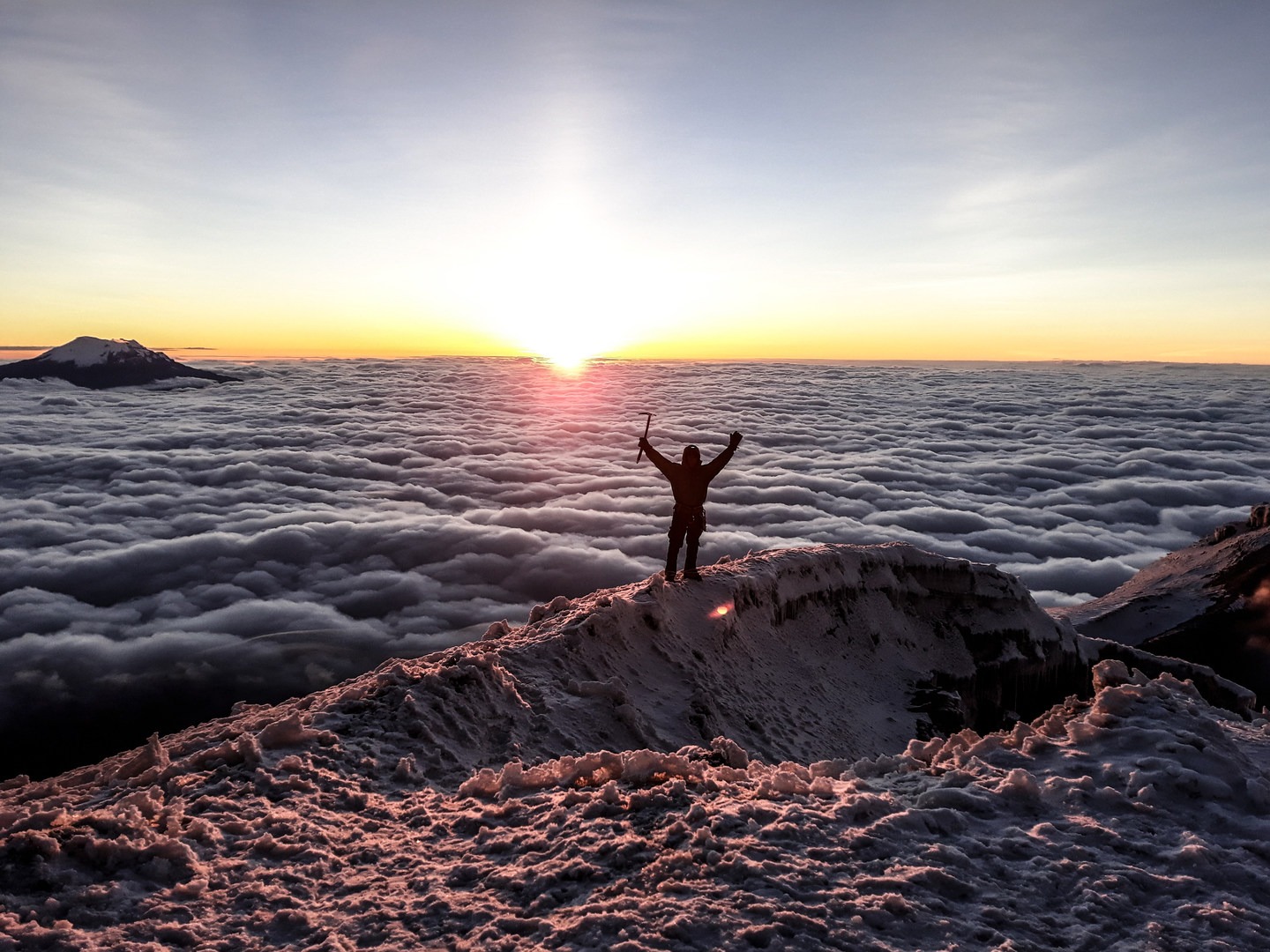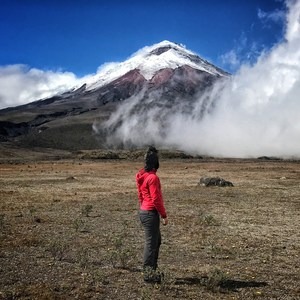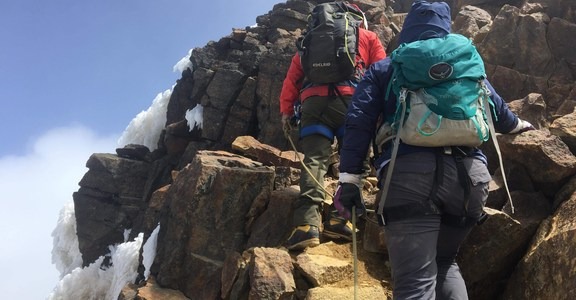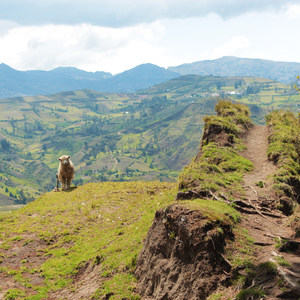You are here
Cotopaxi is the second highest mountain in Ecuador and the third highest active volcano in the world. Sitting at 19,347 feet, this volcano is a superb objective for any mountaineer who is craving a high altitude volcanic climb. While this climb can be completed at any time of the year, you have a better chance of climbing in Ecuador’s dry season, which is July and August.
You will need to get acclimated before attempting to summit Cotopaxi, so it is recommended to plan three to five high altitude day hikes in the Quito region (such as Illniza Norte or Mount Ruminauhi) leading up to it. A hiker's ability to handle the altitude is a primary factor that determines their abity to summit or not, so be sure to plan the week before the big hike carefully. It is also necessary to stay in a mid-altitude town during your acclamation hikes. Latacunga, Machachi, and El Chaupi are common towns to stay in for mountaineer travelers.
You are required by Cotopaxi National Park to hire a certified guide for the Cotopaxi climb. Gear that is required includes a helmet, sunglasses, a headlamp, gloves, carabineers, harness, rope, mountaineering plastic boots, ice crampons, an ice axe, and a backpack. Temperatures will drop to below freezing with a wind chill, so you will need a heavy coat, gloves, a winter hat, winter socks, and all the appropriate winter layers. If you are in a position where you do not have any of this gear, inlcuding the winter clothes, there are plenty of options to rent in Latacunga and Quito, and you may also be able to rent from your hired guide.
While it is not required, most people who summit Cotopaxi will sleep at Refugio José Rivas, also known as José Rivas Refuge, the night before the climb. You need reservations for dinner and bed, so be sure to check with your guide that these have been made. You get here by parking at the refuge parking lot inside Cotopaxi National Park. From the parking lot (which is located at 14,765 feet), it is a 0.6-mile ascent to the refuge, which sits at 15,953 feet. Once you arrive at the refuge you get to enjoy a delicious home-cooked dinner as you feel the excitement in the air by mingling with other guides and climbers about the upcoming climb. After dinner, plan on sleeping only two to three hours before the midnight climb begins!
The name of the only open route to the summit is the "Heartbreaking Route," and the first piece is gravelly until you reach the lower glacier, which sits at 16,730 feet and approximately 0.4 miles from the refuge. This is the last point visitors can reach if they are not climbing Cotopaxi with a guide. At this point crampons get strapped on, and the snow and ice trekking begins.
It is a steady hike to the summit. Pace will be determined by fitness level and acclamation. There are some points where you will need to hop over crevasses, but other than that, it is not a technical climb. Due to this, as long as you are in good physical shape and have experience climbing some sort of high-altitude mountains (exceeding 14,000 feet), you should be capable of summiting this volcano!
Most people summit within four to seven hours. Unfortunately, since you hike at night, views are few before sunrise as you approach the summit. Once you reach the summit, however, you have views that one can only see by climbing this mountain, including the peak of Chimborazo, the highest mountain in Ecuador. People tend to hike at different paces during this climb, so you could have the summit to yourself or be joined by just a few others. On the way back, the views do not stop impressing, especially of Cotopaxi itself, with it’s deep crevasses and snow that glitters in the sun.
Logistics + Planning
Current Weather: Powered by Dark Sky



























Comments
Sign In and share them.